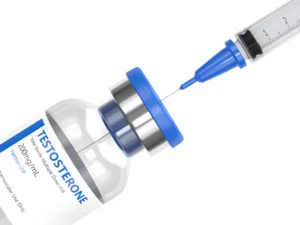
The present accepted standard of care for individuals undergoing FTM (Female to Male) Top Surgery is to have them stop their testosterone treatments a few weeks before surgery and then restart sometime in the postoperative period. There is no consensus on an exact time, however, but the vast majority of plastic surgeons performing this procedure are recommending cessation starting between two and four weeks before surgery and then resuming treatments within a few weeks post-op. **(see end for update)
There is a very logical and prudent reason for this recommendation. It is based on the known relationship between testosterone and its stimulatory effects on the production red blood cells (RBC’s) and the consequences of that as well as its effects on platelets, cells that affect clotting.
The bottom line is that this is for your safety even it will mean a short term psychological and physiological sacrifices.
Scientific studies show that testosterone treatments are associated with an increased risk of developing deep vein thrombosis (DVT’s), or blood clots, that are usually associated with pain and swelling of the affected leg. These clots can also dislodge and travel to the lung resulting in a pulmonary embolism that can be fatal.
The underlying cause of this is the stimulatory effect that testosterone has on the production of red blood cells as well as its effect of increasing platelet adhesiveness, crucial in the formation of blood clots. This results in a higher blood count (hematocrit or Hct.) leading to an increased viscosity of the blood (thickness) and greater risk for the development of these clots. Different formulations of testosterone, including how they are administered, impact the risk level.
Further exacerbating this problem is the well-known fact that surgery does increase one’s risk for developing blood clots and for a significant length of time in the postoperative period.
Being overweight, with a BMI (body mass index) of 30 or more, also increases this risk. Those with a BMI of over 40 have an even higher risk for the development of clots.
So, by stopping the testosterone for some period of time prior to surgery, there will be a reduced stimulatory effect on the production of new red blood cells as well as on platelet adhesiveness.
This can lead to the desirable goal of lowering one’s risks for developing a DVT or worse.
The following are other things that patients can do to help reduce their risk for developing a blood clot:
1. Keep well hydrated. Drink a little more water than you usually do. By doing so, one can reduce the viscosity of the blood – making it “thinner”.
2. Ambulate a lot starting the day of surgery. Don’t lay in bed for hours on end. Walking around frequently increases blood flow in your legs and reduces stagnation.
3. Wear calf high supportive stockings for a week or more following surgery.
Presently, we recommend that our patients stop their testosterone beginning two weeks prior to surgery and then restart it two weeks following surgery.
For more information regarding FTM top surgery or to schedule an appointment, please contact our office at (480) 451-3000.
** The above information and practice of stopping testosterone has been changed and updated. Please see “Update on Stopping Testosterone Prior to FTM Top Surgery”.





